Species Datapage No 35
You may click on most photographs to enlarge. *Denotes a Naturalised species
Scroll down to find a species
|
Species Datapage No 35 |
|
You may click on most photographs to enlarge. *Denotes a Naturalised species |
|
Scroll down to find a species |
| Species Common Name: Wood Sage | |||||||||||||||
| Species Botanical Name: Teucrium scordonia | |||||||||||||||
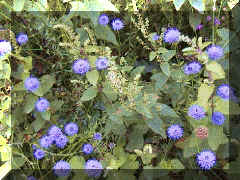
Wood Sage is the green flowering plant seen here with blue Sheep's Bit Scabious |
|||||||||||||||
| Management: An acid soil shale loving species, ideal for Heaths, Woods, many upland sites, and shaley acid sloping ground where few other plants can survive, so it is useful. For mines such as the Silvermines and Avoca, this plant offers a very useful species for reclamation. | |||||||||||||||
| Tolerance of cutting: Low, | |||||||||||||||
| Cutting time: Autumn. | |||||||||||||||
| Edible / Medicinal: | |||||||||||||||
|
Life Cycle (Form): Perennial Flower Height: 20 to 60 cm Foliage Height: 5 - 30 cm Flower Colour: Green Flowering period: July, August, Time to Flower: 12, months Soil Type: Will grow in well drained acid soils,. pH Type: Acid, Neutral, Moisture: Dry, Moist, Aspect: Full sun, Partial shade, Deep shade under tall trees. Wildlife Value: Medium, Attracts Insects. |
|||||||||||||||
|
|||||||||||||||
| Species Common Name: Yarrow | |||||||||||||||
| Species Botanical Name: Achillea millefolium | |||||||||||||||
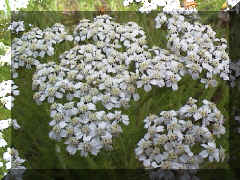
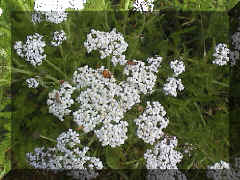 |
|||||||||||||||
| Management: Yarrow is an easy species and has a very high visual impact if you can establish large clumps. Flowers is very late and wildlife value is high. Yarrow makes a great roadside plant and grows on a wide range of soils. | |||||||||||||||
| Tolerance of cutting: High | |||||||||||||||
| Cutting time: None, Spring if required. | |||||||||||||||
| Edible / Medicinal: Edible, Medicinal, | |||||||||||||||
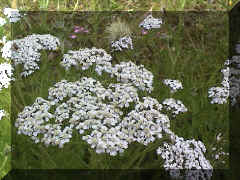
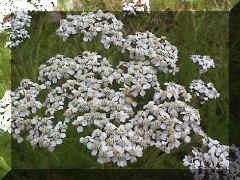
|
|||||||||||||||
|
Life Cycle (Form): Perennial Flower Height: 20 to 60 cm Foliage Height: 5 - 30 cm Flower Colour: White, Flowering period: July, August, September. Time to Flower: 12, months Soil Type: Will grow in most soils. Best in Clay. pH Type: Acid, Neutral, Alkaline. Moisture: Dry, Moist, Aspect: Full sun, Wildlife Value: High, Attracts Birds, Butterflies, Bees, Bumblebees, Hoverflies and Insects. |
|||||||||||||||
|
|
|||||||||||||||